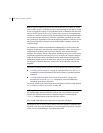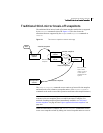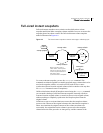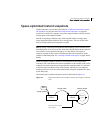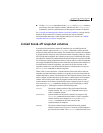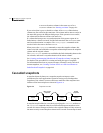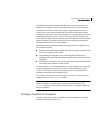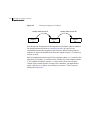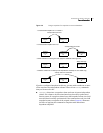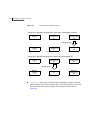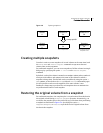
310 Administering volume snapshots
Emulation of third-mirror break-off snapshots
As for instant snapshots, space-optimized snapshots use a copy-on-write
mechanism to make them immediately available for use when they are first
created, or when their data is refreshed. Unlike instant snapshots, however, you
cannot enable synchronization on space-optimized snapshots, reattach them to
their original volume, or turn them into independent volumes.
See “Creating and managing space-optimized instant snapshots” on page 324
for details of the procedures for creating and using this type of snapshot.
For information about how to set up a cache for use by space-optimized instant
snapshots, see “Creating a shared cache object” on page 322.
Emulation of third-mirror break-off snapshots
Third-mirror break-off snapshots are suitable for write-intensive volumes (such
as for database redo logs) where the copy-on-write mechanism of space-
optimized or full-sized instant snapshots might degrade the performance of the
volume.
If you use the
vxsnap prepare command to enable a volume for use with instant
and space-optimized snapshots, you cannot use the
vxassist snapshot
commands to administer snapshots that you create for the volume. If you
require snapshots that behave as third-mirror break-off snapshots (that is, they
must be fully synchronized before they can be used), there are three ways to
achieve this:
■ Use the vxsnap addmir command to create and attach one or more snapshot
mirrors to the volume. When the plexes have been synchronized and are in
the SNAPDONE state, the
vxsnap make command can then be used with the
nmirror attribute to create the snapshot volume. This technique is similar
to using the
vxassist snapstart and vxassist snapshot commands that
are described in “Traditional third-mirror break-off snapshots” on
page 305.
■ Use the vxsnap make command with the plex attribute to use one or more
existing plexes of a volume as snapshot plexes. The volume must have a
sufficient number of available plexes that are in the ACTIVE state.
Note: The volume must be a non-layered volume with a mirror or mirror-
stripe layout, or a RAID-5 volume that you have converted to a special
layered volume (see “Using a DCO and DCO volume with a RAID-5 volume”
on page 277) and then mirrored.
The plexes in a volume with a stripe-mirror layout are mirrored at the
sub-volume level, and cannot be broken off.





